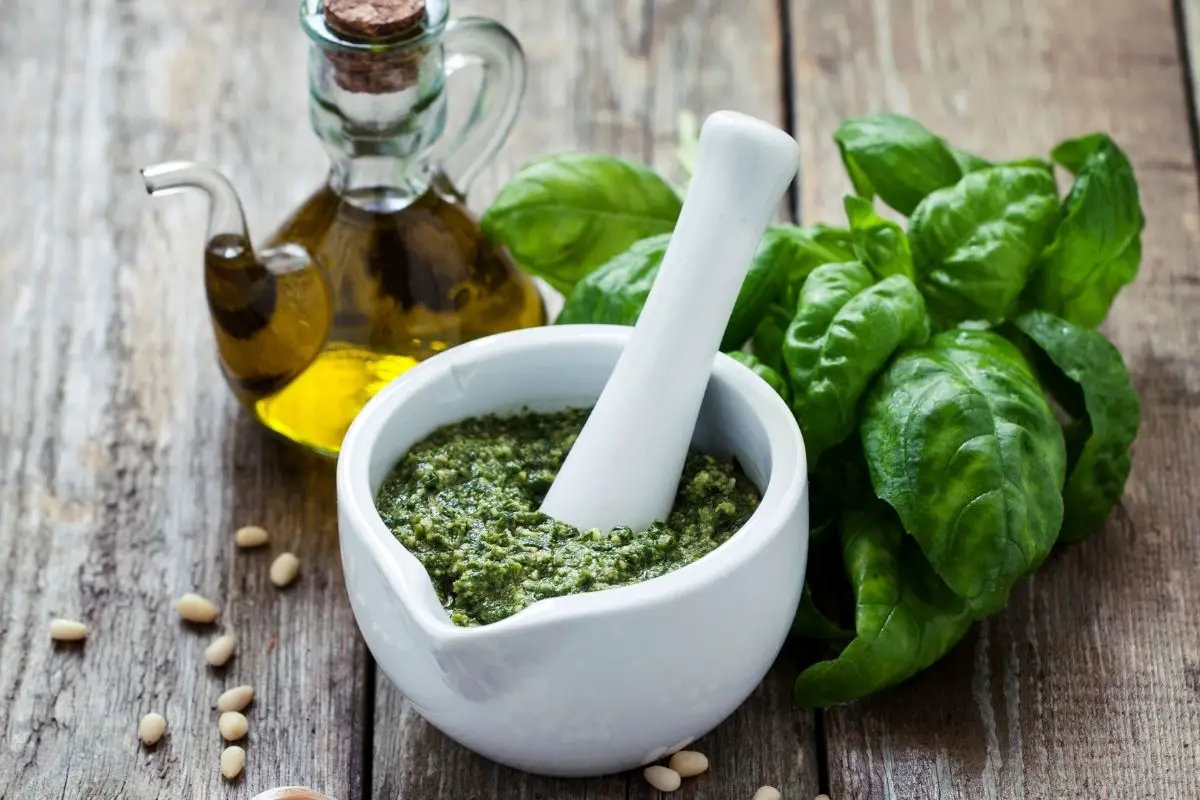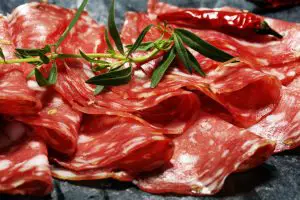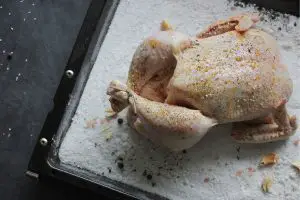Pesto is a delicious sauce made from basil leaves, garlic, pine nuts, olive oil, and Parmesan cheese but is it Keto? It’s often served over pasta or pizza. Pesto is also a great way to add flavor to salads and other dishes so you may think it’s not.
Pesto is traditionally made using a mortar and pestle, but now you can easily make it at home with ingredients you probably already have around the house.
You don’t have to go out and spend hundreds of dollars on expensive specialty ingredients to make a tasty pesto. Instead, you can simply mix together some fresh basil leaves, garlic, olive oil, and Parmesan cheese.
But is pesto keto? Keep on reading to find out!
Health Benefits
Pesto has many health benefits, including:
- Improves your mood
- Helps lower cholesterol levels
- Promotes weight loss
- Boosts energy
- Lowers blood pressure
- Reduces stress
- Supports healthy digestion
- Contains antioxidants
- May help protect against cancer
The best part about making homemade pesto is that you get to control exactly what goes into it. You can use any combination of herbs and spices you like. This makes for a much more flavorful pesto than store-bought versions.
Ingredients
If you want to try out this recipe, here are the ingredients you will need:
- 1/2 cup (125 mL) basil leaves
- 3 cloves garlic
- 3 tablespoons pine nuts (optional)
- 1/4 cup (60 mL) extra virgin olive oil
- 3 tablespoons (45 mL) grated Parmesan cheese
- Salt and pepper
How To Make Homemade Pesto
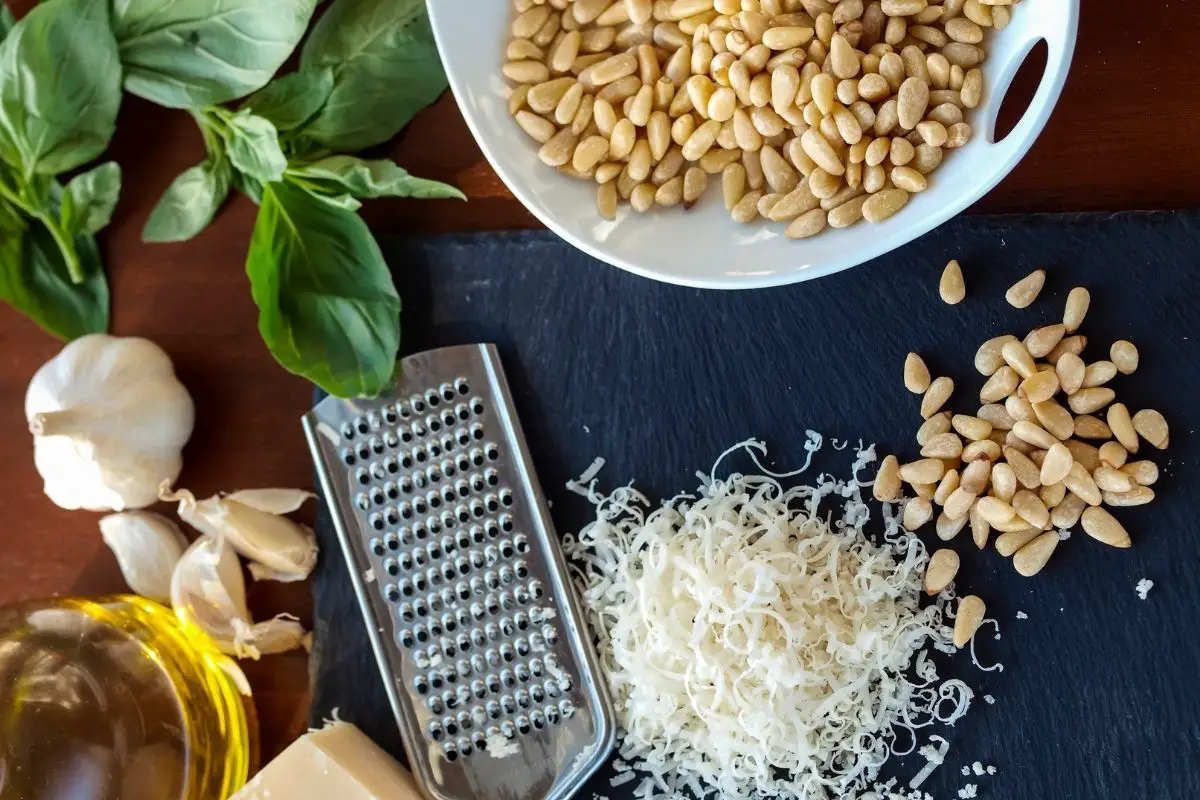
To begin, combine all the ingredients in a food processor. Pulse until combined well.
Next, transfer the pesto to a bowl and stir in additional salt and pepper as desired.
This pesto tastes even better if you let it sit overnight before serving. The flavors develop further when left to rest.
Store leftover pesto in an airtight container in the refrigerator for up to 3 days.
Homemade Pesto Recipe Tips
Use whatever variety of basil you prefer. I recommend using either Genovese or Italian varieties. If you buy pre-made pesto, be sure to check the label to ensure there are no added sugars or preservatives.
Use only good quality olive oil. Extra virgin olive oils contain less acidity and higher amounts of beneficial nutrients.
Don’t skimp on the amount of cheese. Use a full three tablespoons (45 mL).
Make sure to season your pesto properly. Add salt and pepper according to taste.
Try adding different types of herbs to your pesto. Basil is classic, but you could also experiment with oregano, thyme, rosemary, sage, mint, parsley, or cilantro.
What Does Keto Mean?
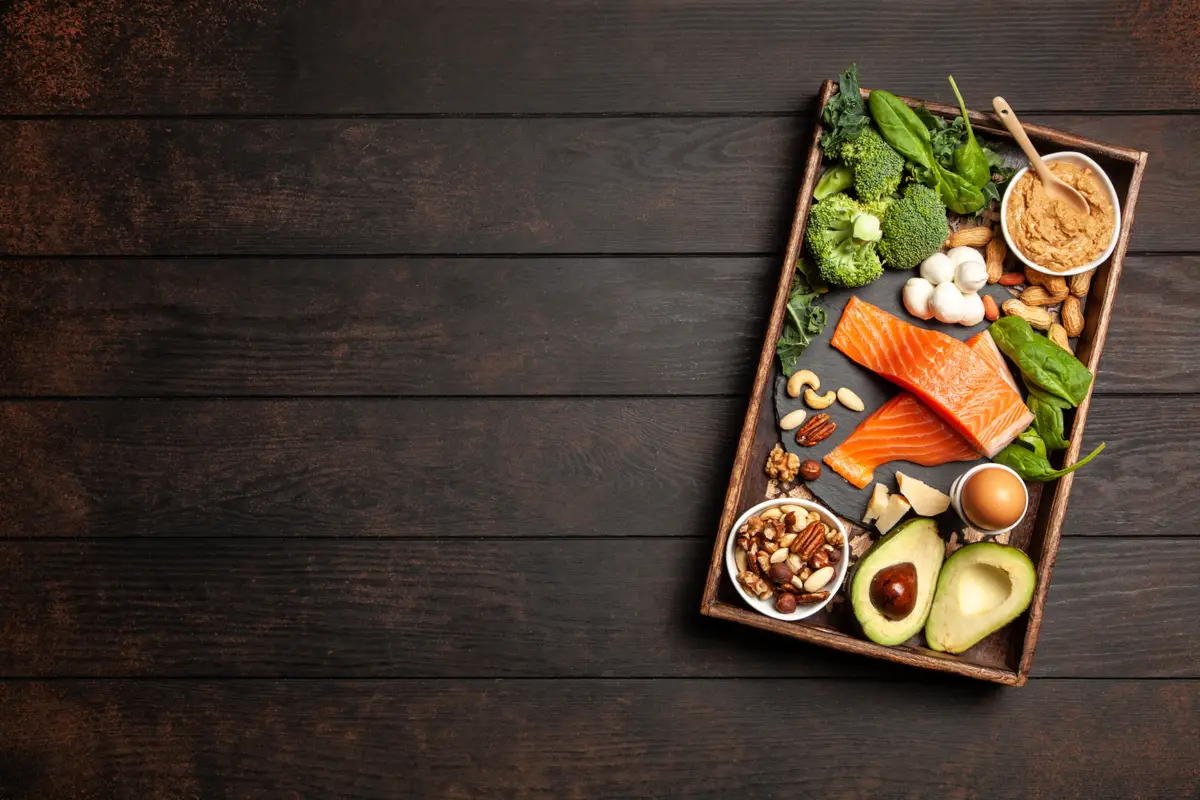
Keto diet means eating foods that are high in fat and low in carbohydrates. These foods include meat, fish, eggs, dairy products, butter, cream, fatty cuts of beef, lamb, pork, poultry, and seafood.
When people talk about keto diets, they usually mean a very specific type of ketogenic diet called the “ketogenic diet for beginners.” This type of ketogenic diet focuses on limiting carbohydrate intake while increasing fat consumption.
People who follow this type of ketogenic diet often eat between 20 grams and 50 grams of net carbs per day. Net carbs refer to total carbs minus fiber. Most Americans consume too many carbs without realizing it.
What Is A Ketogenic Diet?
The ketogenic diet is a high fat, moderate protein, low carb diet which helps reduce seizure frequency in children who have epilepsy. When someone eats a ketogenic diet, they eat very few carbohydrates and instead rely on fats and proteins for fuel.
A ketogenic diet plan may seem restrictive because it limits carbohydrate intake, but research shows that people who follow a ketogenic diet experience significant improvements in their overall health and wellness.
Ketosis is a metabolic state where your body uses stored fat for energy rather than glucose. In order to enter ketosis, you must limit your daily carb intake to around 20 grams or fewer.
In addition to being effective at reducing seizures, some studies suggest that following a ketogenic diet can help improve other conditions such as diabetes, cancer, Alzheimer’s disease, Parkinson’s disease, depression, anxiety, migraines, heart disease, and more.
So, Is Pesto Keto?
A ketogenic diet is an extremely low carbohydrate diet. It challenges the traditional carb dominated diets and promises a healthier life by eating fats. This diet forces your body to use fat for energy instead of carbohydrates. Most of your carbohydrate consumption is replaced with healthy fats.
Pesto is a delicious sauce that tastes great on pasta or chicken. It is also keto friendly. A lot of people think pesto is high in carbohydrates because it contains olive oil. However, this is not true. In fact, pesto is extremely low in carbohydrates.
It contains only 2 grams of carbohydrates per tablespoon. This means that if you eat 1/4 cup of pesto, you get about 4 grams of carbs. That’s less than half of what most people consume in a single meal!
Traditional pesto has anywhere between zero and two grams of net carbs per serving. Pesto is one of the healthiest keto condiments on the planet. It’s really easy to prepare at home and requires no additives or preservatives.
Because it contains olive oil, cheese, and basil, pesto is great for keto dieters. It’s low in carbs and high in fat, making it perfect for those who want to lose weight.
Is Store Bought Pesto Keto?
Pesto is usually made with basil, garlic, olive oil, pine nuts, Parmesan cheese, and other ingredients. You should know that store bought pesto is often high in carbs, but you can still use it if you want.
We suggest checking the nutrition labels before using any store-bought pesto because some brands contain more than 5 grams of carbs per tablespoon. Two tablespoons of pesto contain about 90 calories. You could make a meal out of pesto by adding some meat or cheese, but it’s typically better to make pesto yourself.
Final Thoughts
If you’re looking for a quick way to add a delicious keto flavor to your meals, try adding some pesto to your next dish. It will taste amazing and be good for you too!

